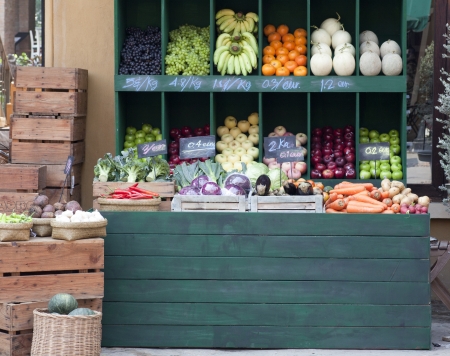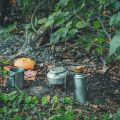Understanding British Produce Seasonality
When planning a camping trip across the UK, knowing which fruits and vegetables are in season can make a real difference in both freshness and flavour. British produce changes with the seasons, so what’s at its best in June might not be available—or as tasty—in September. During late spring and summer, you’ll typically find strawberries, raspberries, gooseberries, broad beans, peas, new potatoes, and courgettes freshly harvested from local farms or markets. By contrast, apples, root vegetables like carrots and beetroot, and hardy greens such as kale tend to peak from late summer into autumn.
Understanding seasonality isn’t just about getting the best-tasting produce; it also means your fruit and veg will last longer without refrigeration—a key consideration when camping. Seasonal goods are usually picked closer to ripeness and haven’t travelled far, so they arrive fresher and more robust. When you shop for your trip at a farmers’ market or local greengrocer, ask what’s been picked recently. You’ll not only support local growers but also reduce food waste and enjoy meals that reflect the best of British countryside flavours.
2. Packing and Transporting Fresh Produce
When heading out for a camping trip in the UK, ensuring your fresh British produce arrives in good condition is half the battle. The right packing techniques not only preserve flavour and texture but also minimise food waste. Here are some key tips to help you pack and transport fruit, veg, and other fresh items safely:
Choose Breathable Bags for Freshness
Many fruits and vegetables benefit from air circulation during transport. Avoid plastic carrier bags, which can trap moisture and accelerate spoilage. Instead, opt for breathable cotton or mesh produce bags, commonly found in most British supermarkets or farm shops. These allow air to circulate, keeping your produce crisp for longer.
Use Sturdy Containers to Prevent Bruising
Soft-skinned fruits like strawberries, raspberries, or tomatoes bruise easily if packed too tightly. Using rigid containers with secure lids provides much-needed protection against bumps during travel—particularly on winding country lanes or rough campsites. Place a layer of kitchen roll at the bottom to absorb any excess moisture and cushion delicate items.
Packing Guide: Best Containers for Common British Produce
| Produce Type | Packing Method | Container Recommendation |
|---|---|---|
| Berries (strawberries, raspberries) | Single layer, avoid stacking | Shallow plastic or metal tin with ventilation holes |
| Leafy greens (lettuce, spinach) | Loose, gently rolled in a damp tea towel | Lidded Tupperware or reusable silicone bag |
| Root veg (carrots, beetroot) | Unwashed, kept dry | Paper bag or hessian sack |
| Apples & pears | Individually wrapped in paper | Cardboard box with dividers |
| Tomatoes | Stem side down, single layer | Punnet with cushioning underneath |
Avoid Overpacking & Mix Wisely
Packing too many items together increases the risk of bruising and accelerates spoilage due to trapped ethylene gas released by ripening produce like apples and bananas. Whenever possible, separate fruit from vegetables and group similar types together. This helps maintain optimal freshness throughout your trip.
Top Tip: Chill Before You Go
If you have access to a fridge before setting off, pre-chill your produce. Cold produce stays fresher longer—especially useful for soft berries or salad leaves if you’re heading out on a warm summer weekend.

3. Storing Without Refrigeration
Keeping fresh British produce in good nick while camping—without the luxury of a fridge—calls for a bit of ingenuity and some time-honoured tricks. The UK’s changeable weather can be both a blessing and a curse, but with careful planning, you can keep fruit, veg, and other perishables fresher for longer.
Using Natural Shade and Coolbags
Start by making the most of natural shade at your campsite. Tuck your coolbag or basket under a hedge, tree, or even beneath your tent’s flysheet. Modern insulated coolbags lined with frozen gel packs (or even chilled bottles of water from home) will buy you precious hours, especially on milder days. It’s best to open them as little as possible to maintain the chill.
Burying Root Veg: The Old-School Method
If you’re feeling adventurous or want to channel traditional allotment wisdom, burying hardy root veg like carrots, beetroot, and parsnips is surprisingly effective. Dig a shallow pit in cool soil (avoid areas likely to flood), wrap your veg loosely in newspaper or a cotton bag, and cover with earth. The natural insulation helps regulate temperature and moisture—just mark your spot so you remember where to dig them up!
Improvised Damp Cloth Wraps
For leafy greens and soft herbs, try wrapping them in a clean, damp tea towel before storing in your coolbag or a shaded basket. This keeps them crisp by maintaining humidity without letting them sit in water, which encourages rot.
Hanging Bags for Air Circulation
String up mesh bags from a low branch or inside your tent porch for items like apples, onions, or garlic. Elevating produce improves air circulation and protects it from curious wildlife. Avoid plastic bags, which trap moisture and accelerate spoilage.
Avoid Direct Sunlight & Waterlogging
No matter the method, always keep produce out of direct sunlight and away from puddles or damp ground. Excess heat speeds up ripening; excess moisture invites mould. With these practical approaches rooted in both modern kit and old-school know-how, you’ll enjoy fresh British fare throughout your camping trip—even without a fridge.
4. Making the Most of Limited Space
When camping across the UK, storage space is at a premium, whether you’re packing your rucksack for a Lake District hike or loading up the boot for a Cornish getaway. Here’s how to make every inch count while keeping your fresh British produce in top nick.
Prioritising What to Pack
Space limitations mean you’ll need to be ruthless about what comes along. Focus on essentials that are both filling and versatile. For example, root veg like carrots and potatoes are robust, don’t bruise easily, and can slot into everything from fry-ups to stews. Leafy greens tend to wilt quickly unless carefully wrapped, so only bring as much as you’ll use in the first day or two.
Produce Versatility Chart
| Produce | Meal Uses | Storage Suitability |
|---|---|---|
| Carrots | Raw snacks, stews, roasts | Excellent – hardy and long-lasting |
| Apples | Eaten raw, desserts, salads | Good – store away from soft fruit |
| Tomatoes | Sandwiches, salads, sauces | Fair – avoid squashing, use early |
| Mushrooms | Fry-ups, pasta, omelettes | Poor – keep dry and consume soon |
| Potatoes | Baked, boiled, fried | Excellent – cool, dark place preferred |
| Berries | Porridge topping, snacks | Poor – very delicate, eat first day |
Packing Smartly: Tips for Maximum Efficiency
Your rucksack or car boot can only carry so much. Use small containers or reusable bags to separate items that might get squashed (think tomatoes and berries). Heavier produce like potatoes should sit at the bottom; lighter or fragile items on top. If you’re tight on space, opt for multi-use foods—an onion works in nearly any meal and packs small.
Top Tips for Packing Produce:
- Avoid over-packing: it’s tempting but leads to bruised fruit and veg.
- Select produce that will last several days without refrigeration.
- If possible, plan meals before you pack so you know exactly what you need.
- Leave some space for local finds—you might stumble upon a farm shop or pick-your-own along the way!
The key takeaway is to pack with purpose—choose robust British produce that can handle a bumpy ride and lend themselves to multiple meals. With clever planning and realistic expectations about what fits in your kit, you’ll enjoy fresh food throughout your camping adventure.
5. Warding Off Wildlife and Pests
One often-overlooked challenge when camping across Britain is protecting your fresh produce from local wildlife and curious pests. Whether you’re pitching up in the Lake District or setting out on the Cornish coast, British campsites are home to everything from foxes and squirrels to determined badgers and ever-present insects. To ensure your apples, carrots, or leafy greens remain untouched by non-human hands (or paws), it’s essential to adopt some best practices tailored for rural UK environments.
Choose Secure Storage Solutions
Use hard-sided, sealable containers instead of soft cool bags or open baskets. British wildlife have sharp noses and nimble paws; even a clever crow can undo an unsecured bag. Look for robust boxes with tight-fitting lids—these will keep out both rodents and rain.
Store Food Off the Ground
Elevate your produce wherever possible. Placing crates or containers on a picnic bench or hanging them from a sturdy tree branch (using strong rope) deters ground-dwelling creatures such as hedgehogs, mice, and badgers, all of which are common visitors at rural British sites.
Keep Campsite Tidy and Scent-Free
A tidy camp is your first line of defence. Dispose of peelings, cores, and scraps promptly in animal-proof bins provided by many UK campsites. Avoid leaving any food waste or packaging about, as this will attract everything from wasps to deer. Wash up soon after eating: lingering smells are an open invitation.
Utilise Natural Deterrents
Certain natural scents—like mint or vinegar—can be used sparingly around storage areas to discourage pests without harming local fauna. However, avoid anything too strong or artificial as this may disrupt the ecosystem.
Be Mindful with Night Storage
If you’re camping wild or at a basic site, store all produce inside your tent vestibule or locked car overnight. In more remote spots, foxes are particularly skilled at sniffing out unattended treats. Remember: what keeps the critters out also keeps your produce fresher for longer.
By understanding the habits of British wildlife and respecting their habitats, you’ll enjoy your fresh fruit and veg in peace—and leave no trace but footprints behind.
6. Quick Fixes: Preserving and Using Up
Even with the best planning, some of your British produce might begin to look a bit tired after a few days at camp. Rather than let it go to waste, there are several tried-and-true methods for giving your fruit and veg a second lease of life. First, consider quick preserves: apples, berries, or even tomatoes that are softening can be stewed with a sprinkle of sugar and a dash of lemon juice over the camp stove to create a makeshift compote—brilliant on porridge or toast in the morning. For vegetables like carrots, cabbage, or onions that are just starting to wilt, try a speedy pickle by slicing thinly and soaking in vinegar with salt and any available herbs; after an hour or two, you’ll have a tangy side for sandwiches or grilled meats. If you’ve got a campfire going, plenty of produce can be rescued by roasting. Wrap potatoes, root veg, or even whole apples in foil and nestle them among the embers for a comforting snack or side dish. Soft courgettes and peppers can be chopped up and fried off with eggs for an easy campfire frittata. Finally, keep an eye on portions to avoid over-prepping food—use up leftovers in soups or stews the next day. With these simple fixes, you’ll make the most of your fresh British ingredients while keeping food waste to an absolute minimum.


